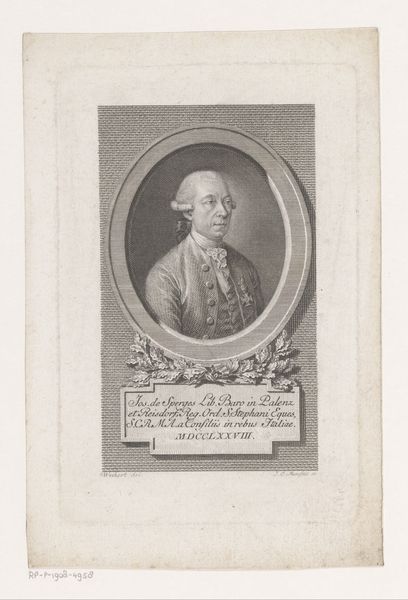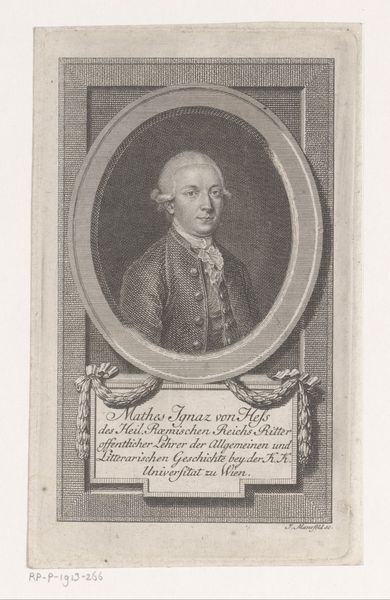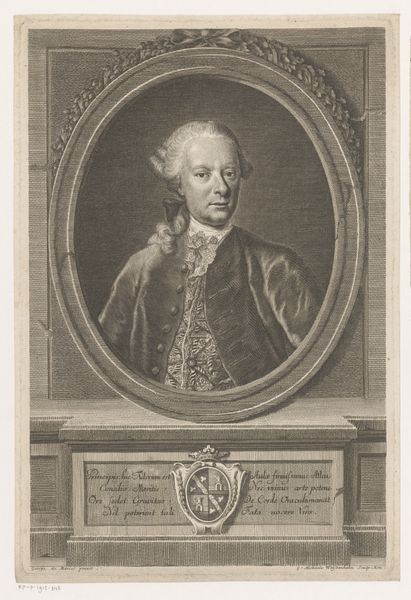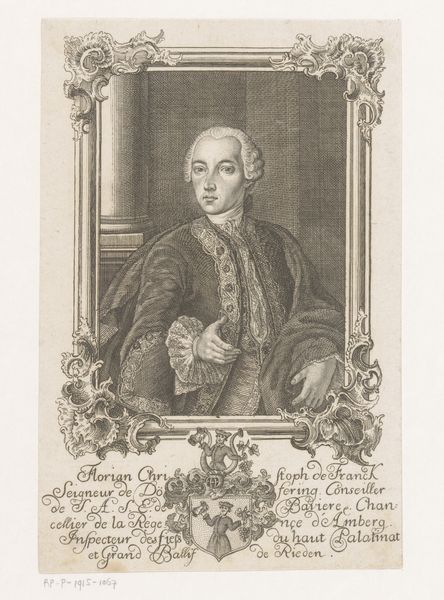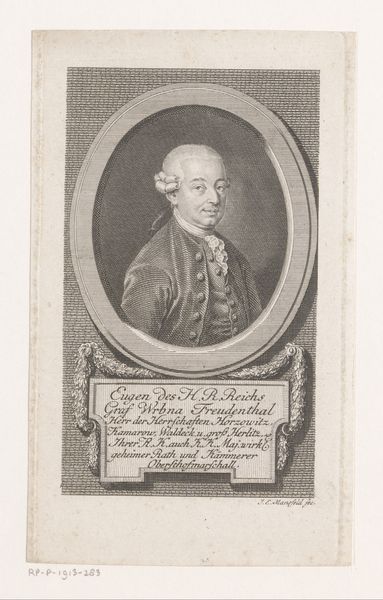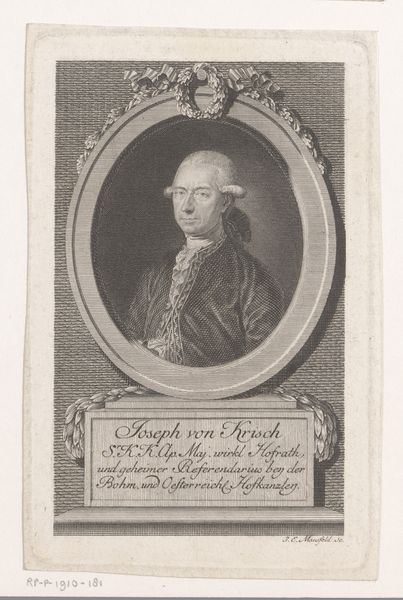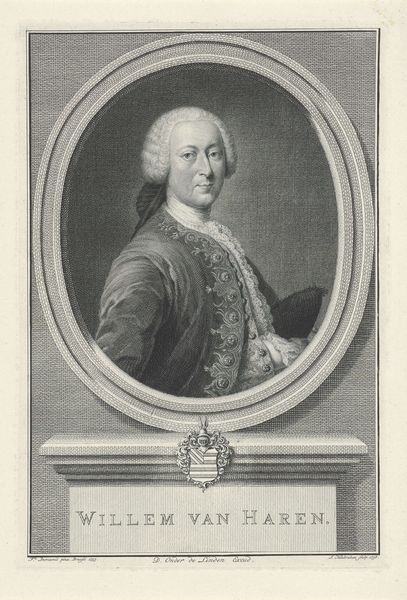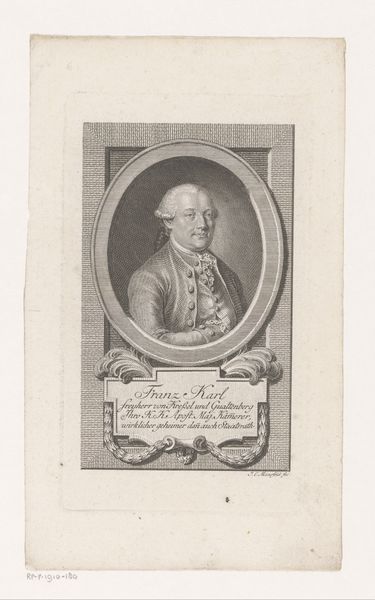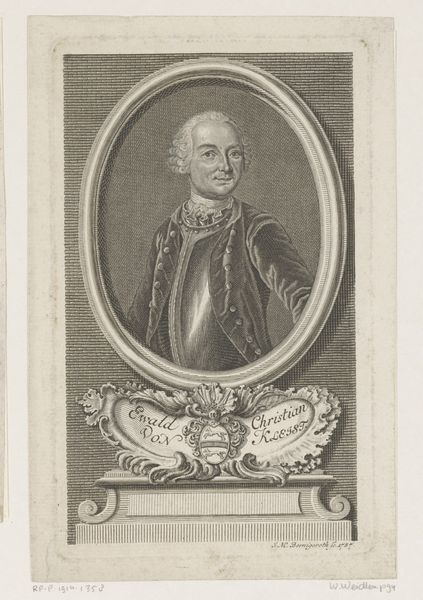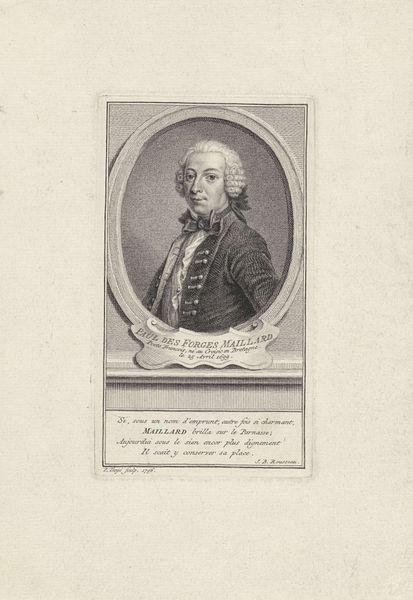
#
pencil drawn
#
photo of handprinted image
#
light pencil work
#
photo restoration
#
pencil sketch
#
old engraving style
#
old-timey
#
19th century
#
pencil work
#
repetition of white colour
Dimensions: height 162 mm, width 102 mm
Copyright: Rijks Museum: Open Domain
Johann Ernst Mansfeld created this engraving of Franz Jozef I von Liechtenstein sometime in the late 18th century. It offers insight into the visual culture of aristocratic power in Central Europe. The image deploys a formal visual language, a language of ovals and rectangles, of Latin inscriptions and heraldic devices, to convey the status of its subject. Consider the context in which it was made. The small principality of Liechtenstein, located between Austria and Switzerland, had only recently been formed through the union of several lordships. For the new state, visual representations of its rulers were an essential tool for consolidating power and prestige. The formal attire of the subject, including the wig, jacket, and medals, all were tools for portraying status. Historians use resources like family papers, state documents, and studies of costume to understand the full meaning of art like this. Its meaning is contingent on the social and institutional context.
Comments
No comments
Be the first to comment and join the conversation on the ultimate creative platform.
